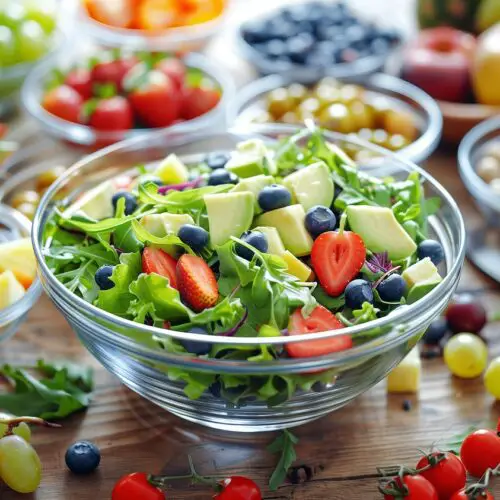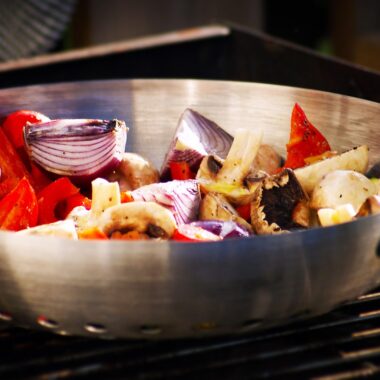Cooking with vegetables offers a vast playground of flavors, textures, and colors, but the real magic happens when you pair them with the right herbs and spices. These natural flavor enhancers can transform a humble carrot, a earthy beet, or a crisp zucchini into a dish that delights the senses. However, matching herbs and spices to vegetables can feel daunting with so many options available. Should you sprinkle rosemary on potatoes or cumin on cauliflower?
Does cilantro work with sweet peppers? This guide will demystify the process, offering principles, practical pairings, and tips to help you confidently season your vegetable dishes.
Understanding Herbs and Spices
Before diving into pairings, it’s worth understanding the difference between herbs and spices. Herbs are the leafy, green parts of plants—think basil, parsley, or thyme—and often bring fresh, aromatic, or grassy notes. Spices come from seeds, roots, bark, or fruits—like cumin, cinnamon, or paprika—and tend to offer deeper, warmer, or more intense flavors. Both can complement vegetables, but their roles differ: herbs often brighten or balance, while spices add depth or heat.
Vegetables themselves have distinct flavor profiles—sweet, earthy, bitter, or starchy—which serve as the foundation for seasoning. The goal is to enhance, not overpower, these natural tastes. With that in mind, let’s explore the principles of pairing and then apply them to specific vegetables.
Principles of Pairing Herbs and Spices with Vegetables
- Match Intensity: Delicate vegetables like peas or zucchini pair well with lighter herbs (dill, mint) or subtle spices (white pepper, coriander). Heartier options like root vegetables or squash can handle bold flavors like rosemary, cumin, or smoked paprika.
- Complement or Contrast: You can amplify a vegetable’s natural flavor—such as pairing sweet carrots with warm nutmeg—or create contrast, like adding spicy chili flakes to earthy beets for a surprising kick.
- Consider Cooking Method: Roasted vegetables often benefit from woody herbs (thyme, rosemary) or spices that caramelize (cinnamon, turmeric), while steamed or raw vegetables shine with fresh herbs (parsley, cilantro) or zesty spices (lemon pepper).
- Cultural Inspiration: Draw from global cuisines for tried-and-true combinations. Mediterranean dishes favor oregano and garlic, Indian recipes lean on cumin and turmeric, and Southeast Asian flavors embrace lemongrass and ginger.
- Balance the Plate: If your vegetables accompany a protein or starch, choose seasonings that harmonize with the whole meal. For example, garlicky green beans pair well with roasted chicken, while cumin-spiced carrots complement a spiced rice dish.
With these principles in hand, let’s explore specific vegetables and their ideal herb and spice partners.
Leafy Greens (Spinach, Kale, Swiss Chard)
Leafy greens range from tender spinach to sturdy kale, each with a slightly bitter or earthy taste. Their versatility makes them a blank canvas for seasoning.
- Herbs: Fresh dill adds a bright, tangy note to spinach, while sage brings a warm, savory depth to sautéed kale. Swiss chard loves garlic and a sprinkle of thyme for an aromatic lift.
- Spices: Nutmeg is a classic with creamed spinach, enhancing its subtle sweetness. For kale, try smoked paprika or red pepper flakes for a smoky or spicy edge.
- Tip: Lightly sauté greens with garlic and a pinch of spice to mellow bitterness, or toss raw spinach with fresh herbs for a salad.
Root Vegetables (Carrots, Beets, Parsnips)
Root vegetables are naturally sweet and earthy, making them ideal for warm, grounding flavors.
- Carrots: Pair with fresh parsley or dill to highlight their sweetness, or roast with cumin and coriander for a Middle Eastern flair. A touch of honey and cinnamon can turn them into a glazed delight.
- Beets: Rosemary or thyme complements their earthiness, while a dash of allspice or cloves adds warmth. For a bold twist, try chili powder or cayenne.
- Parsnips: Tarragon’s licorice-like flavor lifts their subtle sweetness, while curry powder or ginger adds a spicy kick.
- Tip: Roast root vegetables to concentrate their sugars, then toss with herbs or spices just before serving.
Cruciferous Vegetables (Broccoli, Cauliflower, Brussels Sprouts)
These vegetables have a robust, slightly bitter profile that stands up to strong seasonings.
- Broccoli: Fresh basil or oregano brightens steamed broccoli, while garlic powder and black pepper add punch. For an Asian twist, try ginger and sesame seeds.
- Cauliflower: Roast with turmeric and cumin for a golden, nutty flavor, or toss with fresh cilantro for freshness. Paprika—smoked or sweet—adds depth.
- Brussels Sprouts: Sage or rosemary pairs beautifully with their nutty taste, especially when roasted. Caraway seeds or mustard powder offer a sharp contrast.
- Tip: High-heat cooking (roasting or grilling) enhances their flavor—add spices early and herbs late.
Nightshades (Tomatoes, Eggplant, Peppers)
This family includes juicy tomatoes, meaty eggplant, and vibrant peppers, each with unique seasoning needs.
- Tomatoes: Basil is the classic choice, offering a sweet, peppery balance. Oregano and garlic evoke Italian dishes, while smoked paprika adds a Spanish flair.
- Eggplant: Thyme or mint lifts its rich, creamy texture. Cumin, coriander, or za’atar bring Middle Eastern vibes—perfect for baba ganoush.
- Peppers: Cilantro and lime zest brighten sweet bell peppers, while chili powder or cayenne heats up spicy varieties.
- Tip: Fresh herbs work best with raw or lightly cooked nightshades; spices shine in roasted or grilled preparations.
Squash (Zucchini, Butternut, Pumpkin)
Squash ranges from light and watery (zucchini) to dense and sweet (butternut), offering endless pairing possibilities.
- Zucchini: Dill or mint keeps it fresh and summery, while garlic and oregano make it Mediterranean. A pinch of fennel seeds adds subtle anise flavor.
- Butternut Squash: Sage is a fall favorite, especially with butter. Cinnamon, nutmeg, or allspice enhance its sweetness, while curry powder offers savory complexity.
- Pumpkin: Rosemary or thyme grounds its earthy richness, while ginger or clove adds warmth—think pumpkin soup or pie.
- Tip: Roast squash to intensify flavor, then season generously with spices or finish with fresh herbs.
Legumes (Green Beans, Peas, Lentils)
Though technically seeds, these are often treated as vegetables in the kitchen, with mild, grassy flavors.
- Green Beans: Tarragon or dill adds elegance, while garlic and red pepper flakes bring boldness. Smoked paprika mimics a bacon-like depth.
- Peas: Mint is a classic match, enhancing their sweetness. Coriander or white pepper keeps it light and fragrant.
- Lentils: Bay leaves or thyme work in slow-cooked dishes, while cumin and garam masala add Indian flair.
- Tip: Blanch green beans or peas to retain vibrancy, then toss with herbs; spices suit longer-cooked lentils.
Alliums (Onions, Garlic, Leeks)
Alliums are flavor powerhouses, so seasonings should enhance, not compete.
- Onions: Thyme or rosemary complements caramelized onions, while cumin or paprika adds spice to roasted ones.
- Garlic: Parsley or chives brightens roasted garlic, while black pepper adds bite.
- Leeks: Chervil or tarragon lends a delicate touch, while mustard seeds offer sharpness.
- Tip: Cook alliums low and slow to unlock sweetness, then season lightly.
Starchy Vegetables (Potatoes, Sweet Potatoes, Corn)
These filling vegetables love bold, comforting flavors.
- Potatoes: Rosemary and garlic are timeless for roasting, while chives or parsley lighten mashed versions. Smoked paprika or cayenne adds heat.
- Sweet Potatoes: Cinnamon and nutmeg amplify their sweetness, while sage or thyme balances it. Cajun seasoning brings a spicy twist.
- Corn: Cilantro and lime zest evoke Mexican elote, while chili powder or smoked paprika adds smokiness.
- Tip: Pair starchy vegetables with fats (butter, oil) to carry the flavors of herbs and spices.
Experimenting with Combinations
Once you’ve mastered classic pairings, don’t be afraid to experiment. Start with small amounts—¼ teaspoon of spice or a few chopped leaves per serving—and taste as you go. Combine herbs and spices for complexity: rosemary and garlic, cumin and coriander, or mint and chili. Keep a notebook of successes (and flops) to refine your palate.
Practical Tips for Success
- Fresh vs. Dried: Fresh herbs are best added at the end of cooking for vibrancy; dried herbs and spices can be added earlier to bloom their flavors.
- Toast Spices: Dry-toast spices like cumin or coriander in a pan before adding to vegetables for deeper flavor.
- Layer Flavors: Use a spice early in cooking (e.g., turmeric in oil) and finish with a fresh herb (e.g., cilantro) for balance.
- Salt Wisely: Herbs and spices need salt to shine—add a pinch to bring out their full potential.
- Storage: Keep dried herbs and spices in cool, dark places; replace them every 6-12 months for peak potency.
Sample Recipes to Get Started
- Roasted Carrots with Cumin and Parsley
Toss carrots with olive oil, cumin, salt, and pepper. Roast at 400°F (200°C) for 25 minutes. Sprinkle with chopped parsley before serving. - Garlic-Thyme Brussels Sprouts
Halve Brussels sprouts, sauté in butter with minced garlic and thyme leaves until golden, about 10 minutes. Finish with a squeeze of lemon. - Turmeric Cauliflower Steaks
Slice cauliflower into thick slabs, brush with turmeric, olive oil, and salt. Roast at 425°F (220°C) for 20 minutes, then garnish with cilantro.
Conclusion
Matching herbs and spices to vegetables is both an art and a science, rooted in understanding flavors and trusting your instincts. Whether you’re roasting potatoes with rosemary, steaming peas with mint, or grilling eggplant with za’atar, the right seasoning can turn a simple dish into a culinary standout. Start with the pairings here, then venture into your own creations. With practice, you’ll develop a knack for seasoning that makes every vegetable dish a masterpiece.
References and Inspirations
The information in this article is inspired by a blend of culinary traditions, practical cooking experience, and widely available resources on flavor pairing. While no specific texts were directly quoted, the following sources and concepts have informed the guidance provided:
- Culinary Traditions: Mediterranean, Indian, Southeast Asian, and Middle Eastern cuisines, which have long histories of pairing herbs and spices with vegetables. Examples include the use of oregano in Greek roasted vegetables, cumin in Indian sabzis, and lemongrass in Thai stir-fries.
- Classic Cookbooks: Works like The Flavor Bible by Karen Page and Andrew Dornenburg (2008), which offers extensive flavor pairing suggestions based on chef insights, and Salt, Fat, Acid, Heat by Samin Nosrat (2017), which emphasizes balancing flavors in cooking.
- Herb and Spice Guides: General knowledge from resources like McCormick’s spice guides (available online) and The Spice Companion by Lior Lev Sercarz (2016), which detail the properties and uses of various seasonings.
- Online Culinary Communities: Insights from platforms like Serious Eats, Bon Appétit, and Epicurious, where chefs and home cooks share tested vegetable seasoning combinations.
- Personal Experience: Practical cooking wisdom gained from experimenting with herbs, spices, and vegetables in diverse dishes, reflecting common practices among home cooks.
For further reading, consider exploring these resources or experimenting with your own pantry to discover new pairings tailored to your taste.


















